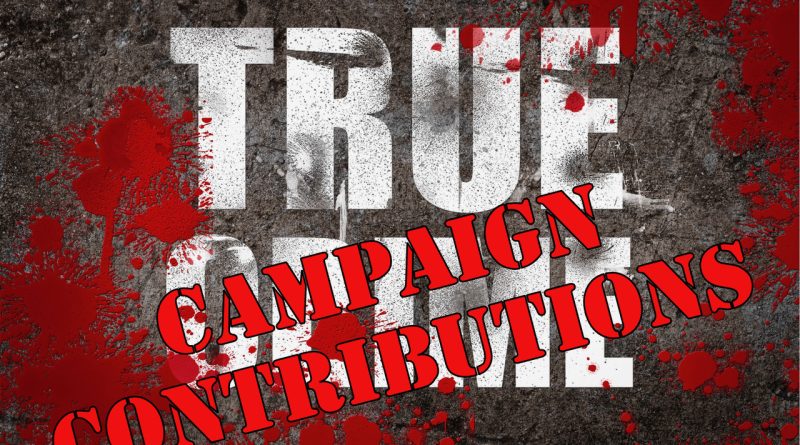Missing the Point: The Truth About Campaign Contributions
Prelude. Hello and welcome to “True Campaign Contributions,” the op/ed that peels away the superficial data reported by the city’s other media for the benefit of more discerning readers like yourself.
“And I should care about this why?”
Because state government is important and you need to know who we’re all about to elect to run it. Because our system for funding elections often undermines the objective of holding our elections in the first place.
So, lean back in your office chair or Barcalounger.
“Do they still make those?”
I have no idea, but our next-door neighbor had one when I was growing up and I remember it being strangely comfortable. To continue… Or maybe you’re just having lunch or dinner at the local diner all by yourself. Or pretending to be working in your office cubical and you need something with a lot of text and some data on your screen instead of Amazon.com. Whatever, I think you’ll find this to be as interesting as campaign contributions data can get.
This episode features a forensic analysis of campaign contributions data published online by our State Board of Elections. More specifically, our team of trained investigators…
“You have a team of investigators?!”
Of course not. I’m experimenting with hyperbole. As I was saying, our team of trained investigators has selected, as a case in point, contributions received by the “Wes Moore for Maryland” campaign committee. As you know, Mr. Moore is the odds-on favorite to be the next Governor of Maryland.
“Great!”
Really? I’m not sure. For one thing, Mr. Moore’s principal attributes are that he’s very bright, writes well, is handsome to a fault, very well-spoken, and has considerable charisma. Other than that, he’s not really qualified to be Governor. What he is, is a Democrat running in a state where Democrats outnumber Republicans by more than two to one. And, most importantly, he’s not Dan Cox, his Republican opponent.
Cox’s problem is not that he’s a Republican, the kind whose traditional elephant mascot has been replaced recently by the very thin whack-a-doodle man who is often seen flailing around in front of used car lots. Cox’s problem is that he’s not Larry Hogan, a Republican who most of us have come to appreciate for his highly effective, middle-of-the-road leadership.
FYI, in this year’s Democrat primary, in an overly crowded field of 10 candidates, Wes Moore won with only 32% of the vote. What that means is that 68% of voting Democrats wanted someone else to be their governor.
Downloading the contributions data. The first thing I did was download all Wes Moore for Maryland contributions from the origin of the committee in May 2021 through the most recent campaign financing report. The next report isn’t due until October 28, less than two weeks before Election Day and well after voting gets underway. Some contributors hold their contributions until late in the campaign, just in case seeing their names on campaign finance reports might be problematic for the candidate.
What I found was a remarkable 25,187 contributions received in less than 16 months between May 6, 2021, and August 23, 2022. Keep in mind that there were fewer contributors than the number of contributions because many people made more than one contribution.
Lots of out-of-state money. Of the total contributions, only 53% of dollars contributed came from Maryland – only 50% of contributions of $1000 or more. Contributors who don’t live here generally don’t care as much about Maryland as residents do – and yet current election law allows them to determine, to a great extent, who we elect to the office of Governor.
“What’s wrong with that?”
Think locally. Suppose, for example, that some economic interests want to open a certain Baltimore City Council district to development which the majority of district residents – who can’t afford to finance their favorite candidate’s campaign – oppose. Money coming from outside the district can help elect someone who will accommodate those special interests whether the district’s residents like it or not.
First revelation. Of the total 25,187 contributions reported so far, only 2,815, just 11% of those contributions, accounted for 77% of the money raised. That 77% is the total raised by contributions of $1,000 or more. Even more impressive is that just 407 contributions of the maximum $6000 accounted for over 28% of the total dollars raised. That’s right. More than 28% of the money raised was from less than 2% of the contributions.
“Why’s that important?”
It’s important because there are two reasons why people contribute money to a candidate. One is because they sincerely want that specific candidate to win because they believe that he or she is the best hope for their family and community. The other reason is less altruistic. It’s because the contributor wants access to the candidate after he or she is elected. As a rule, the more you contribute – personally and by encouraging other contributors to ante up – the more certain an elected official is to take your call. The longer that official is going to talk to you. The more likely he’s going to act on whatever you’re calling about.
Second revelation. If you look at the addresses of everyone making contributions of $1,000 or more, you’ll find that many of those contributors share residential or company addresses with other contributors. The most common reasons are that they are married or share a common interest in a business. So, for example, two people living at the same address can both contribute the maximum $6000, $12,000 in total, even though they may have pretty much the same political objectives.
As another example, let’s say that I have corporate interests that I share with multiple partners, perhaps at a law firm, investment house or real estate development company. Understandably, several of us could be inclined to invest in the same candidate and might use our office address to make those contributions. Collectively, we could make a very substantial contribution, all perfectly legal.
Working with the addresses associated with 2,800+ contributions of $1,000 or more, my best calculation is that just over 535 “groups of related contributors” are responsible for over 38% of the total funds raised by the Wes Moore campaign. And only half of them are from Maryland. It’s this latter half – the large volume contributors who live and work here – who are going to call Mr. Moore from time to time after he takes office. They’re not registered lobbyists. Just friends of the campaign.
Of the 535, just 184 of these groups made contributions of $6000 or more, sometimes substantially more.
Contributions over the legal limit. My study of all these contributions identified a number of instances where a single person contributed more than the $6,000 limit via multiple contributions during the current election cycle. That’s illegal. I doubt that Mr. Moore knows about these violations.
Why don’t analysts at the Board of Elections find these over-contributions? Because there just aren’t enough analysts at the BoE to identify and pursue problems like these until it’s too late, if ever. An investment in better forensic software and procedures for the standardization of contributions data would be helpful.
Conclusion. If you think all this campaign fundraising is about the love of candidates, you’re missing the point. There’s some of that, of course, but a great deal of campaign funding is about access. About influencing our elected officials in ways that can be counter to the public interest – and certainly has nothing to do with majority rule.
If you want to see the raw data I used and the spreadsheets I generated, contact me through the Post-Examiner and I’ll email them to you.

Les Cohen is a long-term Marylander, having grown up in Annapolis. Professionally, he writes and edits materials for business and political clients from his base of operations in Columbia, Maryland. He has a Ph.D. in Urban and Regional Economics. Leave a comment or feel free to send him an email to [email protected].

